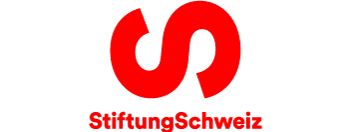Diversity is like the colours of the rainbow. Seven different colours come together to form one fascinating unit – the perfect image for ideal collaboration and mutual enrichment. But a rainbow in all its glory can only come about under the right physical conditions. The same is true of putting together a board of trustees. All the key skill sets and causes need to be represented for it to function at its best.
Wide diversity
Non-profit organisations, charities and associations with diverse strategic committees benefit from the different personal, specialist and professional skills and experience of the individual members. A 65-year-old will approach a question differently to a 23-year-old. Different perspectives and skills benefit the whole committee, especially when it comes to long-term strategies.
If all of the members of a strategic committee are aware of their role and the overarching goals, then diversity of every kind is enriching and productive. A wide range of different knowledge and expertise generally means problems are identified more quickly and tackled more effectively through appropriate action.
A crisis never announces itself in advance. The COVID-19 pandemic has demonstrated that committees need to be able to act quickly and effectively, and should thus be chosen with care. They require mutual trust, integrity, agility and experience. In other words, diversity!
The time factor
Being a member of a strategic committee means taking responsibility for your role and your area of expertise. Joining a board of trustees is a time investment. A conscientious member will prepare their topics for their colleagues on the board in a way everyone can understand. As Albert Einstein once said, ‘If you can’t explain it simply, you don’t understand it well enough.’ A good philosophy. Clear explanations put all the members of a committee in a position to make informed decisions – and therefore in a position to act – in the face of current and future challenges.
Of course, there are a variety of different and interwoven elements required. Rainbow committees with a diverse range of knowledge and experience produce more creative, skilled, inspiring, innovative solutions.
What are all the elements that need to be considered?
Diversity factors:
- Industry and specialist knowledge (e.g. finance, digitalisation, general management, law, project management, communications, etc.)
- Roles and functions
- Education and training
- Gender, age, geographic, ethnic and religious background and networks
- Strategic, methodological, design and management skills
Unity factors:
- Identification with the charity and its purpose, the strategic direction and the overarching goals
- Personal commitment and time available
- An objective, critical and professional approach
- Mindset, ideology and people skills
- Material and moral independence
- Good governance, integrity and no conflicts of interest


